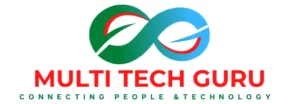Do you want to be a blogger? Does the thought of starting your blog sound like much fun? Or perhaps you already have a blog, but you are not happy with your software. If this is the case, you need to learn more about WordPress.
Be sure to stay on top of updates! Many updates to add-ons or WordPress are security-based, meaning your site could be compromised if you don’t update the software. If it’s telling you a new update is available, install it as soon as possible to protect your site from harm.
If you plan to start a WordPress blog, make sure to offer readers more than just content. Even if you say many useful things, engaging readers with text may be quite difficult. Implementing videos and pictures would be a great idea since this is a great attention grabber.
Add page numbers at the bottom of your comments section if you have a very active community. This is important as it will allow your users to sort through the material and information easier. Make sure that the page numbers are easy to see for the viewers.
Set a publishing time for your blog posts. When editing an article for publication, you can select when it is published. It’s good to set regular updates for a specific date and time. To keep your blog up to date, put your blog posts in ahead of time and let WordPress post them to your blog for you.
When you are done with your site, check out how it looks from a visitors standpoint. Did you get across everything that you wanted? Go to your site from someone else’s computer to get their point of view and write down the changes you will need to make to improve the aesthetics continually.
Encourage your users to share your site with their friends, family, and loved ones on the top social media sites. Twitter and Facebook are the most optimal sites that come to mind, as this can get your name across to millions of different people. A social sharing plugin can be used to facilitate this.
Take the time to log out of your site every once. Go back and look at it as a visitor. Doing so could allow you to see something you are missing when logged in as an administrator. This step will not take very long, but it should set your mind at ease that everything is functioning the way it should be.
Only use the most recent updated WordPress version available. Many updates have security updates to fix vulnerabilities. Malware can often infiltrate WordPress sites that do not have the latest updates. Be diligent about looking for and installing the updates as soon as they become available.
If you find that writing new posts is cluttered and confusing because of all the stuff on your page, clean it up! Use the Screen Options link to choose what shows on the composition page and what remains hidden. Many of your plugins may add content you don’t want, so remove it there.
Are the pictures on your site too big? Or, are you concerned that your visitors cannot see them? Click on “settings” and then on “media.” You will be able to adjust the default size of your pictures. Spend a little time playing around with this to see what suits you, and your site, the best.
A great commenting plugin that is useful for WordPress is Disqus. This free commenting system works well with its API. You can import and back up your comments with it. It also adds essential SEO to your comments so that the search engines can index them easier.
You don’t have to enter your domain name into the URL field when linking internally. Instead, include the information which comes after the first /, such as /index.html. Don’t forget to insert an SEO keyword-rich title to get even more bang for your search rank.
Use comments on WordPress websites. People will feel more involved, and you can learn about them. You can moderate comments before you approve them to prevent spamming on your blog.
Try installing a caching plugin on your WordPress site. There are many out there, but a popular one is W3 Total Cache. This plugin caches the website and keeps it from reloading once a page is reloaded. This makes your site faster. It speeds things up because every file isn’t being called every time a page reloads.
The Relevanssi plugin allows you to search your logs to find out what your users are interested in reading. Why does this matter? When you have writer’s block, you can check out the results it provides to know what you should be researching and posting about on your site.
If your imagery on your WordPress website is rather bulky and slowing your site down, try using WP Smush. It. It compresses all of those images too much easier sizes for browsers to deal with. It can speed up your website quite a bit. The best part is that it can run in the background once installed. So new images are always smushed!
The plugin Broken Link Checker makes finding broken links on your site an easy task. Why don’t you want broken links? They make your content appear dated, which can lose your reader’s interest. When you update or remove broken links, they’ll never realize how old your posts might be.
Conclusion:
WordPress is one of the best blogging platforms out there. It combines ease of use with flexibility and power. Whether you are a novice blogger who is just starting or you have been blogging for many years, you can benefit from learning more about the powerful features of WordPress.



